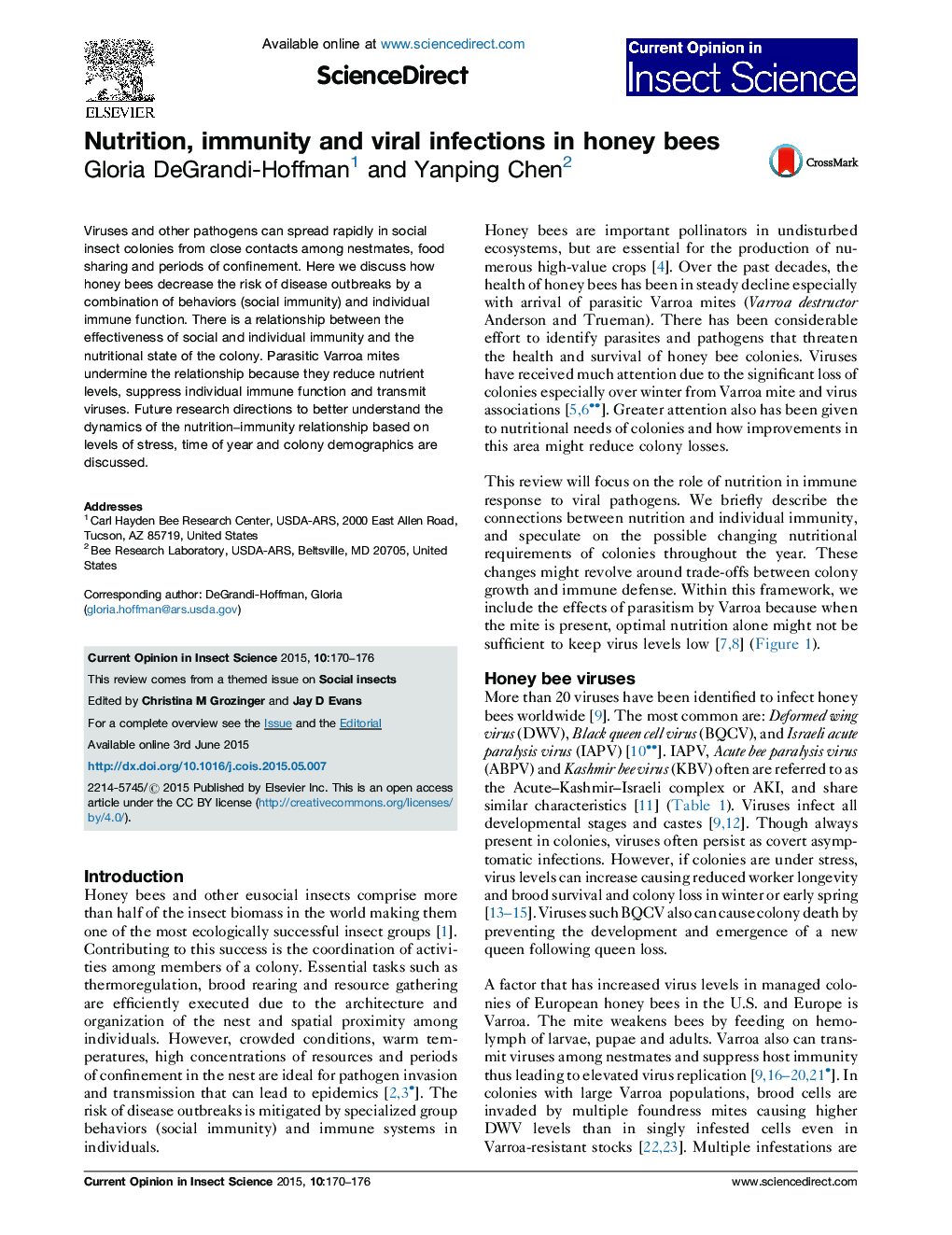| Article ID | Journal | Published Year | Pages | File Type |
|---|---|---|---|---|
| 6374132 | Current Opinion in Insect Science | 2015 | 7 Pages |
Abstract
Viruses and other pathogens can spread rapidly in social insect colonies from close contacts among nestmates, food sharing and periods of confinement. Here we discuss how honey bees decrease the risk of disease outbreaks by a combination of behaviors (social immunity) and individual immune function. There is a relationship between the effectiveness of social and individual immunity and the nutritional state of the colony. Parasitic Varroa mites undermine the relationship because they reduce nutrient levels, suppress individual immune function and transmit viruses. Future research directions to better understand the dynamics of the nutrition-immunity relationship based on levels of stress, time of year and colony demographics are discussed.
Related Topics
Life Sciences
Agricultural and Biological Sciences
Agronomy and Crop Science
Authors
Gloria DeGrandi-Hoffman, Yanping Chen,
